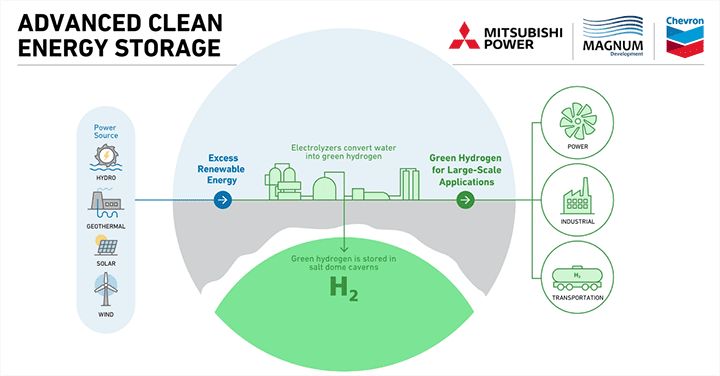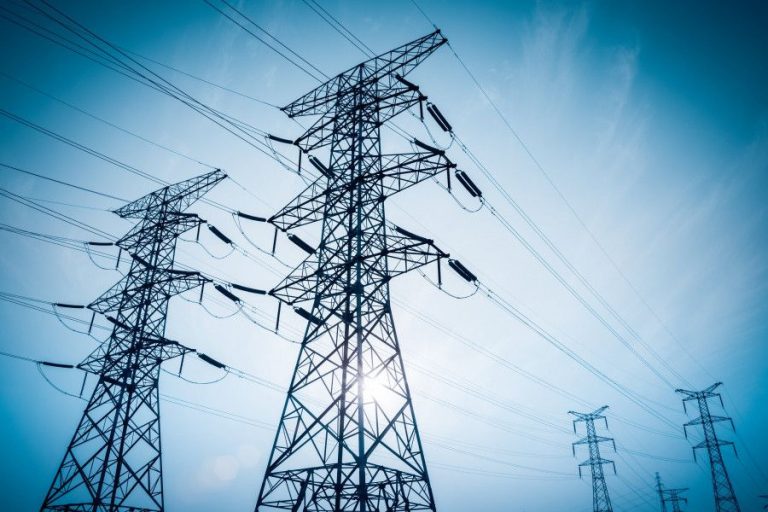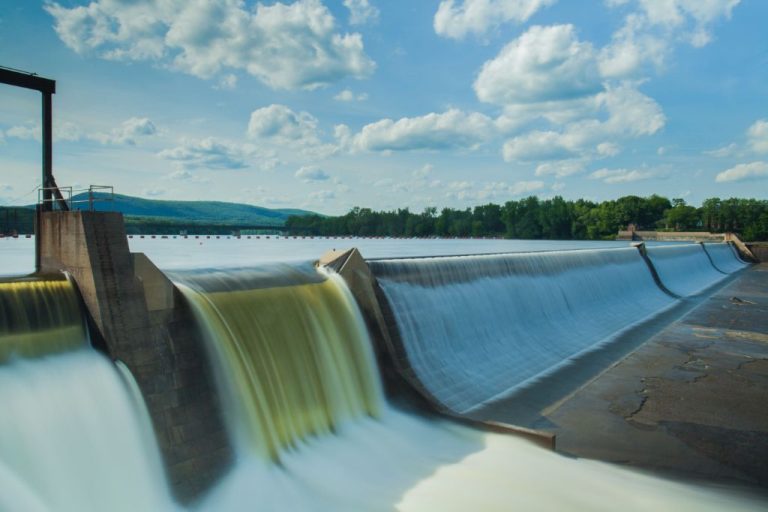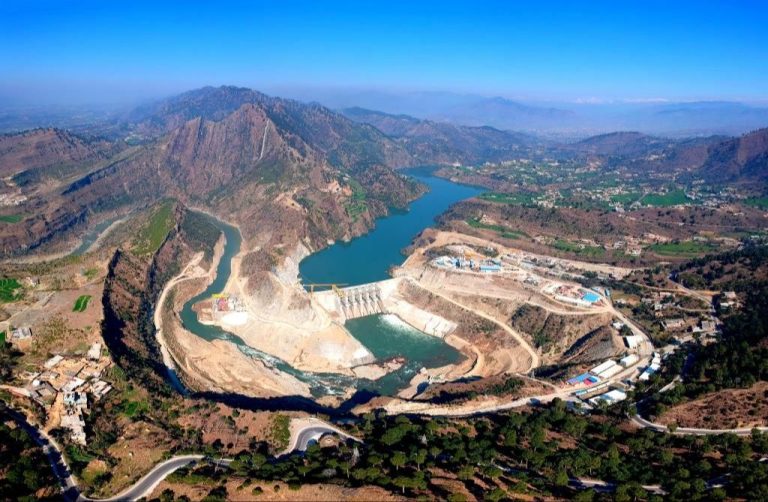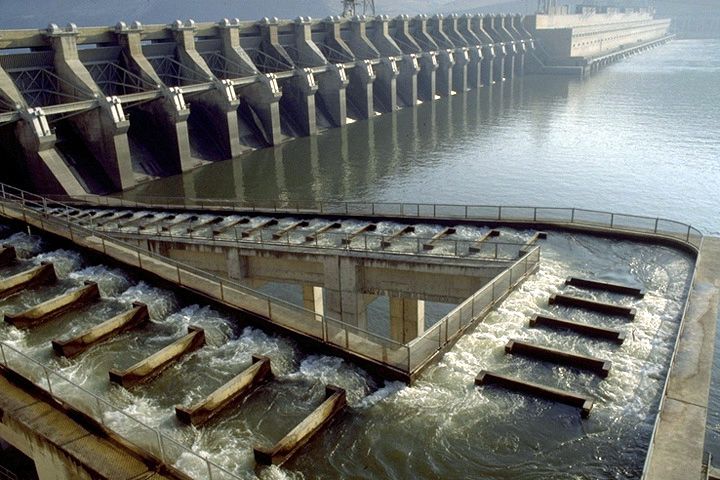What State Uses The Highest Percentage Of Hydroelectric Power?
With climate change and fossil fuel depletion threatening our planet, developing renewable energy sources like hydroelectric power is crucial. Hydroelectric power harnesses the energy of flowing water to generate electricity in a sustainable way. Though only making up 7% of total U.S. electricity generation in 2019 [1], hydroelectricity offers a clean alternative to fossil fuels. This article explores which U.S. state utilizes hydroelectric power the most and why.
What is Hydroelectric Power?
Hydroelectric power is electricity generated from the energy of flowing water. It is a renewable and sustainable energy source that relies on the water cycle and gravity to produce power. Hydroelectric power plants convert the kinetic energy of flowing water into electrical energy without the burning of fossil fuels.
Most hydroelectric power plants use dams to store water in a reservoir. When the water is released from the reservoir, it flows through turbines which spin a generator to produce electricity. The amount of power generated depends on the volume of water and the vertical distance it falls, known as “head.” The spinning turbine converts the kinetic energy of the moving water into mechanical energy. The generator then converts this mechanical energy into electricity.
Compared to fossil fuel plants, hydroelectric power plants produce very low emissions and none of the air pollution. Hydroelectric power is considered a renewable energy source because it relies on the water cycle which is continuously replenished by rainfall and snowmelt. Once a hydroelectric power plant is constructed, the project produces no direct waste and has a substantially lower output level of greenhouse gasses than fossil fuel powered energy plants.
Sources: https://www.energy.gov/eere/water/how-hydropower-works, https://www.usgs.gov/special-topics/water-science-school/science/hydroelectric-power-how-it-works
Hydroelectric Power in the US
Hydroelectric power has a long history in the United States. The first hydroelectric power plant opened on the Fox River near Appleton, Wisconsin in 1882. This launched the development of hydroelectric dams and power plants across the country. By 1940, nearly 40% of the nation’s electricity came from hydroelectric power plants.
Today, hydropower is the largest renewable electricity source in the United States, providing around 6.2% of total utility-scale generation in 2022. According to the U.S. Energy Information Administration, total hydroelectricity net summer capacity was about 79,980 megawatts (MW) in 2022. The top states for hydroelectric power generation are Washington, California, and Oregon.
The main concentration of hydroelectric capacity is in the Pacific Northwest, where the Columbia River and its tributaries offer ideal geography for hydroelectric dams. This region accounts for over half of U.S. hydroelectricity generation. Other major capacity is located along the Colorado River and in the Northeast, the Tennessee Valley, and along the Missouri River. [1]
Factors Influencing Hydroelectric Capacity
There are several key factors that determine the hydroelectric generating capacity in a given area, including geography, population centers, and environmental regulations.
Access to flowing water sources with the potential for damming is one of the most basic geographical requirements for hydroelectric power. Areas with major rivers, waterfalls, and elevation changes tend to have the highest hydro capacity, as the water flow and height (head) help determine power output (EIA).
Proximity of dams and hydro plants to major population centers is also an important consideration, as transmission over long distances can lead to greater power losses. Areas with higher population density near potential dam sites often invest more heavily in hydroelectricity to meet local energy needs.
Environmental regulations can also significantly impact hydroelectric development. Projects that involve damming free-flowing rivers or that disrupt local ecosystems often face more stringent review and restrictions. In areas with abundant hydro resources, environmental rules may constrain capacity growth compared to demand (Thapa).
The State With the Most Hydroelectric Power
When it comes to hydroelectric power generation in the United States, some states rely on this renewable resource much more than others. According to the U.S. Energy Information Administration, the top five states for conventional hydroelectric generation in 2022 were Washington, California, Oregon, New York, and Alabama [1]. However, looking at hydroelectricity as a percentage of total electricity generation shows a different leader.
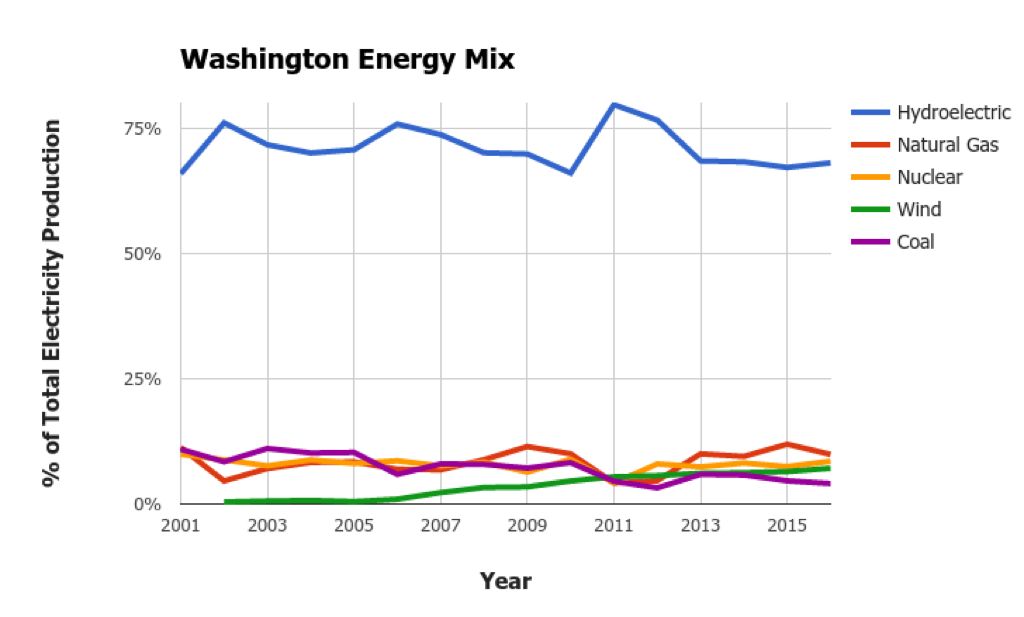
The state that generates the highest percentage of its electricity from hydroelectric power is Washington, at over 70% according to 2021 data [2]. With over 80 terawatt hours of generation from hydroelectric dams in 2022, Washington far outpaces other states in terms of reliance on this renewable resource for its energy needs [1].
Hydroelectric Power in Washington State
Washington state has the highest share of hydroelectricity generation of any state in the country. According to the U.S. Energy Information Administration, Washington generated 29,286 gigawatt hours of hydroelectricity in 2020, accounting for around 27% of the state’s net electricity generation.
Hydroelectric dams in Washington have an installed capacity of over 21,000 MW, making the state second only to California in terms of installed hydro capacity. The Grand Coulee Dam on the Columbia River is the largest hydroelectric power producer in the United States, with a capacity of 6,809 MW. Other major hydroelectric facilities in Washington include the Chief Joseph Dam (2,620 MW), Boundary Dam (1,040 MW), and Wanapum Dam (1,038 MW).
These large-scale hydro projects were built starting in the 1930s and 40s as part of federal efforts to provide electricity and irrigation water in the Pacific Northwest. The Columbia River system today supplies more than two-thirds of Washington’s net electricity generation.
Why [State] Relies on Hydroelectricity
[State]’s geography and climate make it well-suited to generate hydroelectric power. The mountainous terrain provides elevation for dams, and the ample precipitation feeds rivers and reservoirs used for hydropower generation. Additionally, [State] has enacted policies to promote renewable energy production and use. The state passed a renewable portfolio standard in 2004 requiring utilities to get an increasing percentage of their electricity from renewable sources. This policy has encouraged investment in new hydropower projects in [State]. The abundant hydro resources coupled with supportive policies have enabled hydroelectricity to become the dominant energy source for [State]’s residents and economy.
Challenges and Controversies
While hydroelectric power serves an important role in the renewable energy landscape, it also comes with environmental challenges. Large hydroelectric dams can have significant impacts on the local environment and ecosystems.
Damming rivers to create reservoirs leads to flooded vegetation and lost habitat for terrestrial species. It also disrupts fish migration routes and alters water temperatures downstream, impacting fish populations [1]. Building the dams and reservoirs themselves requires flooding large areas, which can displace human populations and submerge natural and agricultural lands.
Another ongoing challenge is the threat of droughts caused by climate change. Hydroelectricity depends on water flow, so sustained droughts can reduce generating capacity. Some facilities experience up to 10-20% losses during dry years [2]. Adapting to these climate impacts through better forecasts and integration with other renewables will be crucial for the future reliability of hydroelectric power.
While hydroelectricity is clean and renewable overall, managing its environmental trade-offs continue to generate controversy and debate. Siting and operating dams wisely with protection of ecosystems in mind can help strike the right balance with hydro’s benefits.
The Future of Hydroelectric Power
Hydroelectric power has significant potential for growth globally, although expansion is limited in some regions. According to the International Energy Agency, global hydropower capacity could grow 17% or 230 GW between 2021 and 2030 (https://www.iea.org/energy-system/renewables/hydroelectricity). However, factors like suitable topography, environmental regulations, and competing uses for freshwater can restrict new dam construction.
There are also opportunities to increase output at existing facilities. Upgrading equipment like turbines and generators can boost efficiency and capacity. For example, the Department of Energy reports some powerhouses in the U.S. could increase their capacity by over 20% with turbine upgrades (https://www.energy.gov/articles/hydropower-vision-new-report-highlights-future-pathways-us-hydropower).
New technologies are expanding possibilities for hydroelectric generation. Run-of-river projects allow electricity production without large reservoirs. Tidal and wave power harness the flow of ocean currents. Floating solar panels deployed on reservoirs can supplement hydropower. Pumped storage facilities store energy and provide grid reliability services. With continuing innovation, hydroelectricity will remain an important renewable energy source into the future.
Conclusion
Washington state uses the highest percentage of hydroelectric power in the United States. With over 60% of its electricity coming from hydro, Washington far surpasses other states’ hydroelectric capacity. This reliance on renewable hydropower aligns with Washington’s focus on clean energy and reducing greenhouse gas emissions. Hydroelectric dams provide affordable, reliable electricity that is not dependent on fossil fuels.
As the threat of climate change grows globally, renewable energy sources like hydro will only increase in importance. With oversight and responsible management, hydroelectricity can provide substantial benefits as part of a diverse energy portfolio. Other states hoping to expand renewable power would do well to look at Washington’s hydroelectric success as a model. The advantages of hydro must be weighed carefully against potential environmental impacts. But overall, transitioning to a greater share of hydroelectricity and other renewables represents an important step in securing our energy future.

